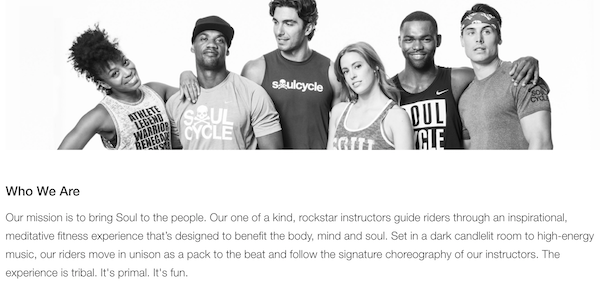
Having repeat customers is essential to many businesses, and the key to keep clients coming back is to provide them with great customer service. Here are five ideas to rate your business’s savvy when it comes to serving customers well.
1. Make a great first impression.
When customers make a purchase from you, make them feel great about it by sending them a series of indoctrination emails. Congratulate them on the purchase, let them know how to get the most out of their new purchase, and encourage them to connect with you on social media and your mailing list.
2. Measure response time.
How fast do you answer prospect and customer questions? Social media has changed the game. Customers that reach out via social media platforms, their phones, chat, or messaging apps expect an immediate answer. Facebook even gives a badge to businesses who respond quickly and consistently.
Not only do businesses need to monitor messages coming in from a record number of places – email, phone, web forms, chat, social media, and more – they need to respond faster than ever.
Without measuring your response time, it’s hard to know how you’re doing, so putting measures in place is the first step to improving this customer service metric.
3. Publish clear policies.
Good customer service starts with setting clear expectations. Before a customer buys from you, they should be able to know what your return policy is in case something goes wrong. Some of the policies that should clearly be published online as well as at all customer-facing business locations include:
- Returns policy: If the product or service is not as expected, can the customer obtain a refund? Is there a re-stocking fee? What about shipping? Cash back vs. store credit?
- Shipping policy: Most people expect free shipping these days. They will want to know what it costs and how long will it take to get the item.
- Terms of service: Are there any limitations to the product? Or legal items that need to be communicated?
- Privacy policy: All clients will be giving you private customer data. They will want to know if it’s secure, if you share it with anyone, and if you are compliant with laws like GDPR (Europe), the CAN-SPAM act (US), or CASL (Canada).
4. Encourage feedback.
Your best ideas for new products and services can come from your customers. Ask for feedback by sending customer satisfaction surveys and requests for testimonials and reviews. Read what customers have to say about your service so that you can make improvements as needed.
5. Check your ego at the door.
As small business owners, sometimes we need to be humble, especially when things go wrong. Be generous with apologies to customers; it will go a long way toward improving customer relations. If you’re at fault, admit it and make it right with the customer. Even if you’re “right,” find a way to explain to the customer so that they feel good about you and your business. Delivering great customer service can be a huge competitive advantage for your business. How does your business stack up against these five ideas? Try them, and watch your revenue grow.
 A great entrepreneur will always be on the lookout for ways to improve their business. Efficiency is a goal everyone wants to achieve when it comes to business because it can translate into less work and more profits. Here are five ways you and/or your staff can become more efficient in your business.
A great entrepreneur will always be on the lookout for ways to improve their business. Efficiency is a goal everyone wants to achieve when it comes to business because it can translate into less work and more profits. Here are five ways you and/or your staff can become more efficient in your business. The products and services your business sells make it unique. The same thing is true of how these items are set up in your accounting software. Whether you’re using QuickBooks Online or something else, getting your products and services set up right can impact the quality of the information you can get out of your accounting system.
The products and services your business sells make it unique. The same thing is true of how these items are set up in your accounting software. Whether you’re using QuickBooks Online or something else, getting your products and services set up right can impact the quality of the information you can get out of your accounting system. It’s always fun to surprise and delight your customers. This puts a smile on your client’s face, boosts loyalty, and is fun for your employees too. Here are five ways to surprise and delight your customers with inexpensive perks.
It’s always fun to surprise and delight your customers. This puts a smile on your client’s face, boosts loyalty, and is fun for your employees too. Here are five ways to surprise and delight your customers with inexpensive perks. If you haven’t looked recently, there is a whole new world out there designed for our convenience. One of these conveniences is food delivery. This industry has changed so much that it deserves a fresh look.
If you haven’t looked recently, there is a whole new world out there designed for our convenience. One of these conveniences is food delivery. This industry has changed so much that it deserves a fresh look. There are a lot of deadlines that come with running a business. Missing some deadlines can have serious financial implications to the health of your business. Let’s take a look at how much you’ll save by being on time with the following deadlines.
There are a lot of deadlines that come with running a business. Missing some deadlines can have serious financial implications to the health of your business. Let’s take a look at how much you’ll save by being on time with the following deadlines. Attracting and retaining talent in your small business can be a giant step toward growing into a mid-sized business. Beyond attracting new employees with salary and benefits, here are several perks, policies, and benefits to consider when recruiting women, and employees in general, to your workforce.
Attracting and retaining talent in your small business can be a giant step toward growing into a mid-sized business. Beyond attracting new employees with salary and benefits, here are several perks, policies, and benefits to consider when recruiting women, and employees in general, to your workforce. Mission statements are not just for large corporations. As an owner of a small business, you can benefit from going through the exercise of writing your mission statement. It can not only re-connect you with your “why,” it can also communicate an important part of your business to all of your stakeholders.
Mission statements are not just for large corporations. As an owner of a small business, you can benefit from going through the exercise of writing your mission statement. It can not only re-connect you with your “why,” it can also communicate an important part of your business to all of your stakeholders.
 The security breach at Equifax a few months ago left many people thinking once again about identity theft. The best thing is to do everything you can to prevent it from happening to you. Here are a few tips to help you reduce your risk of being a victim of identity theft as well as how to reduce the damage from security breaches of your personal data from sources you can’t control.
The security breach at Equifax a few months ago left many people thinking once again about identity theft. The best thing is to do everything you can to prevent it from happening to you. Here are a few tips to help you reduce your risk of being a victim of identity theft as well as how to reduce the damage from security breaches of your personal data from sources you can’t control.

.jpg)



